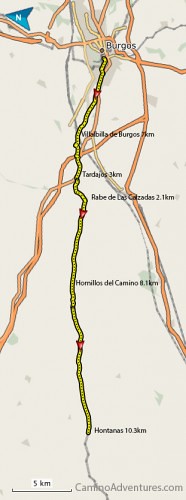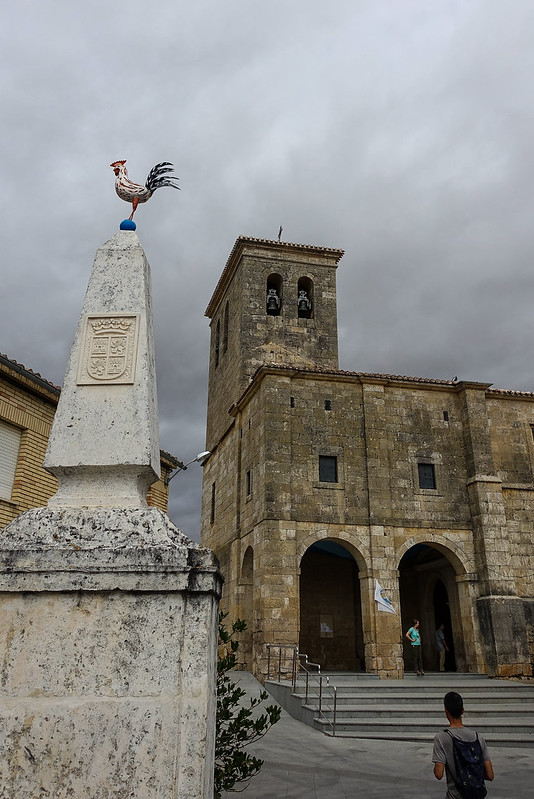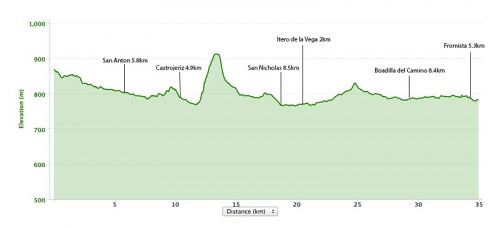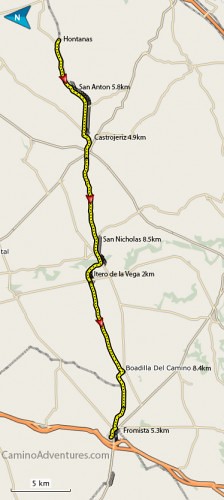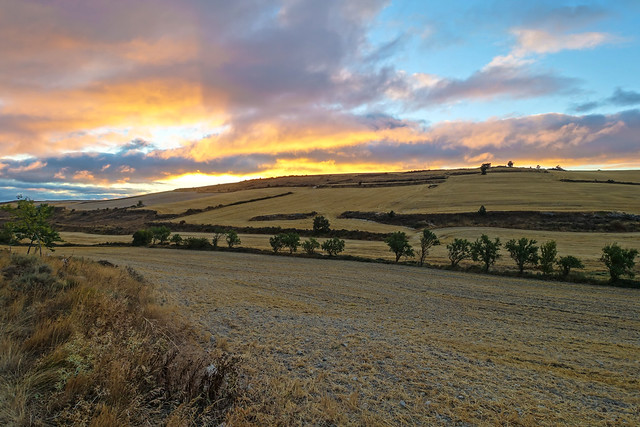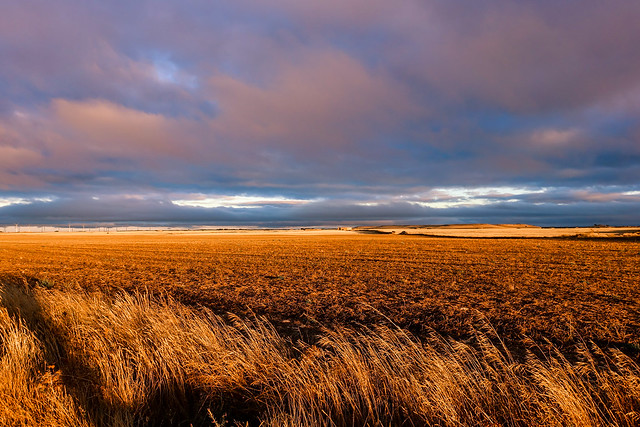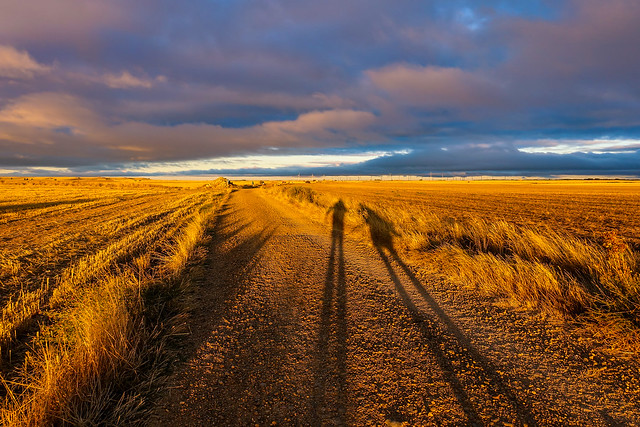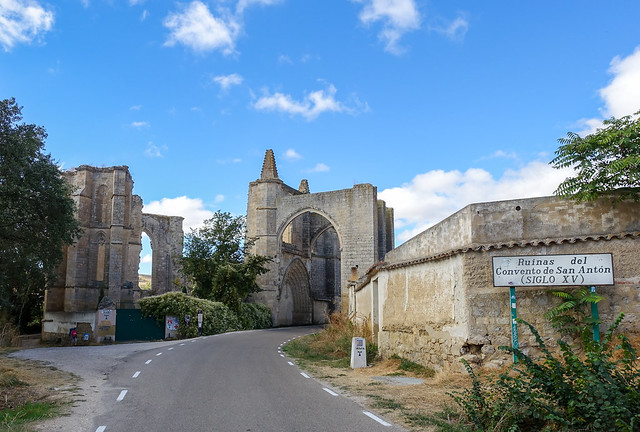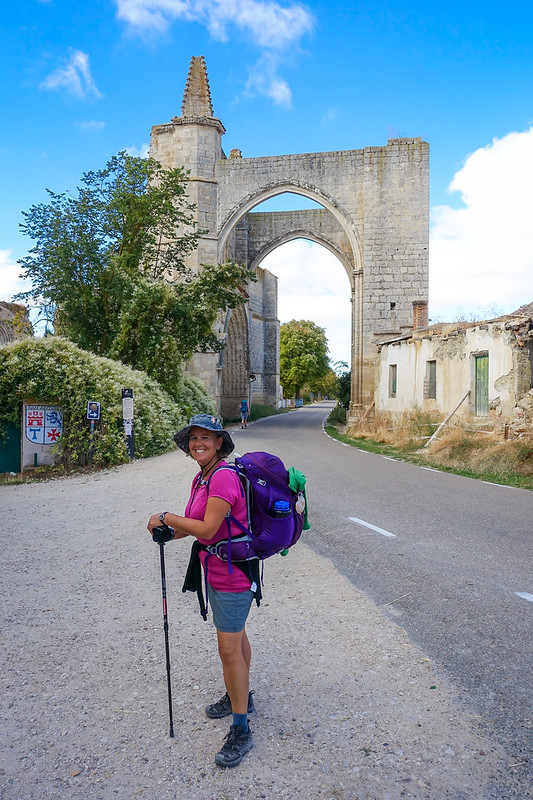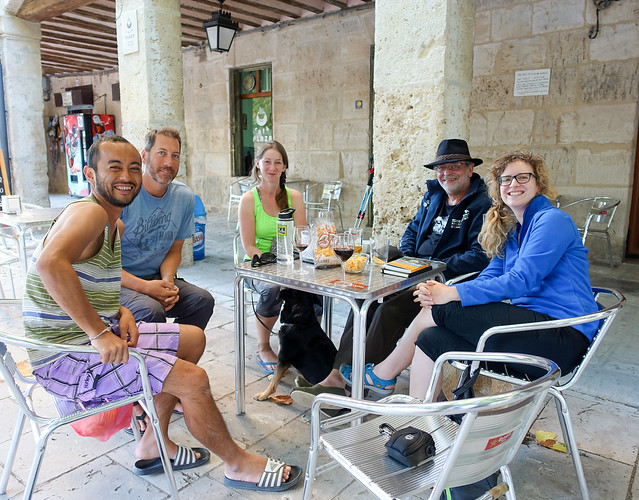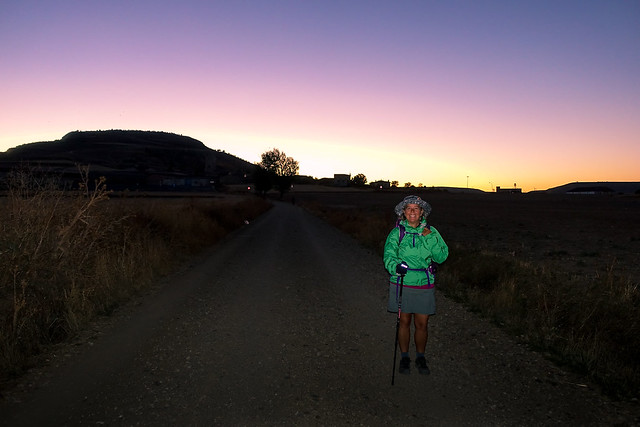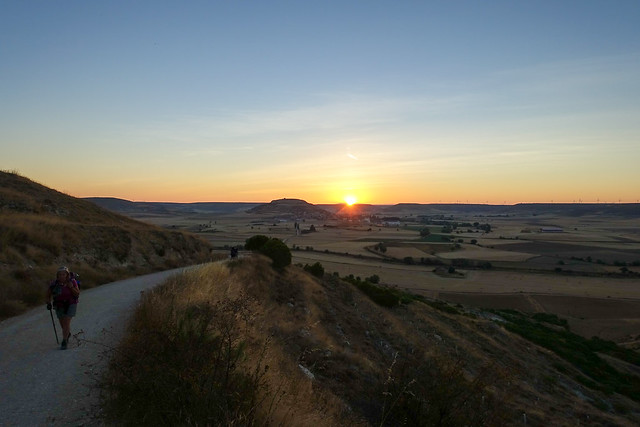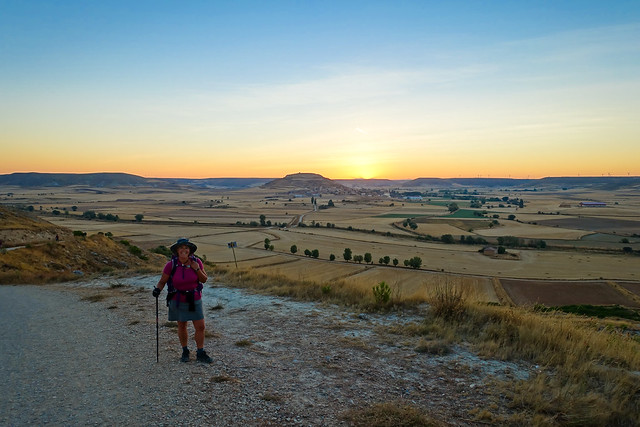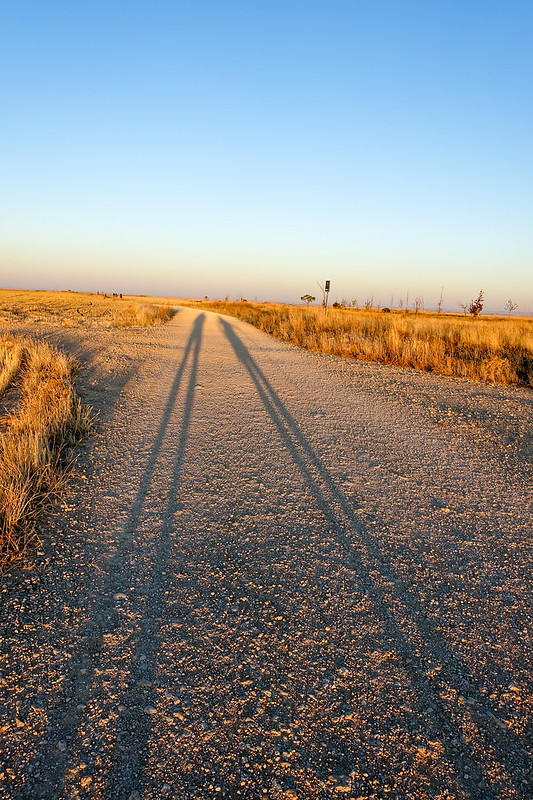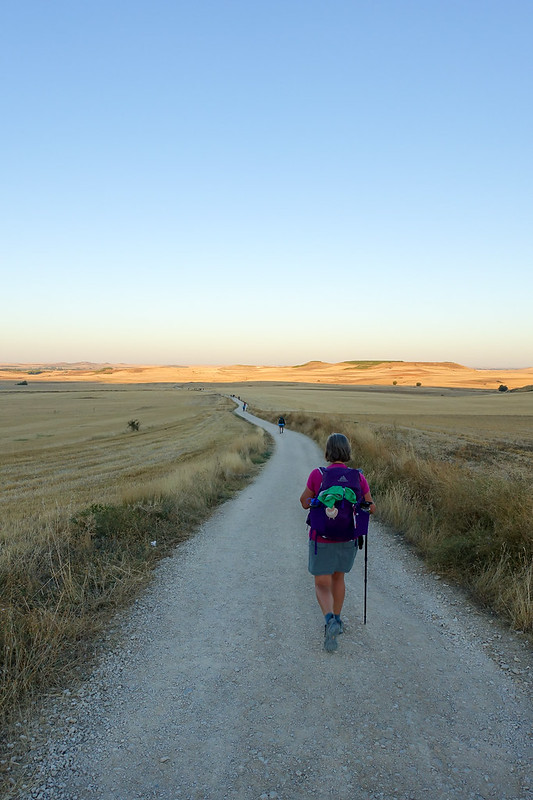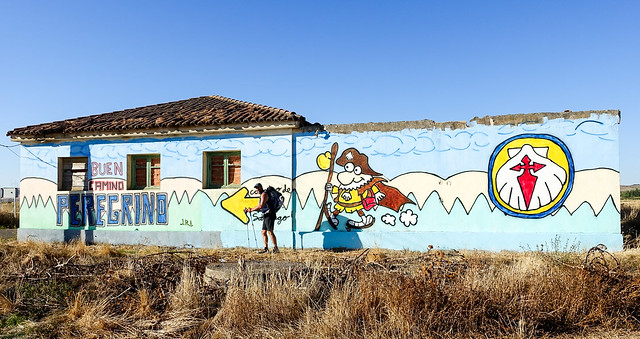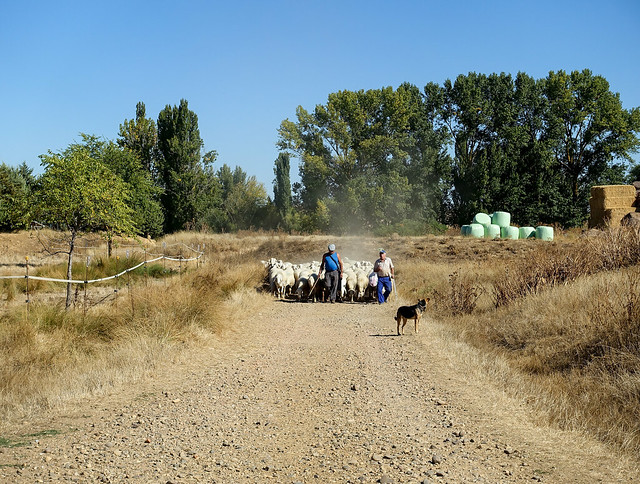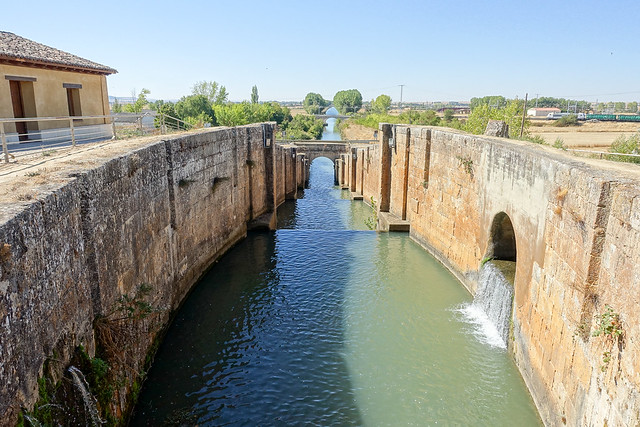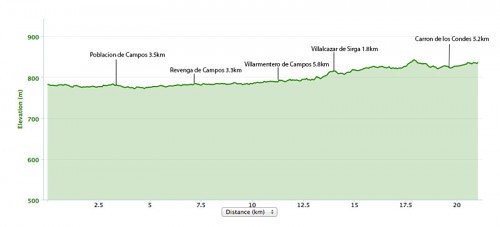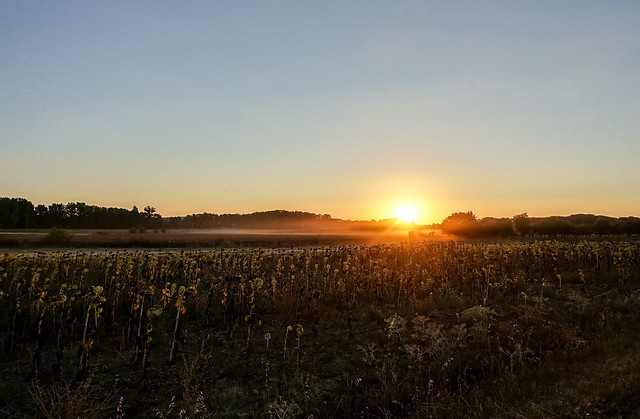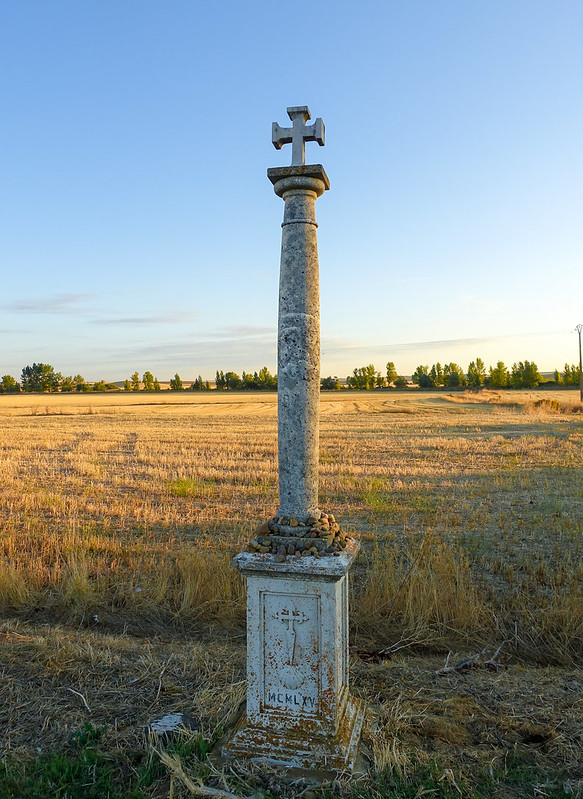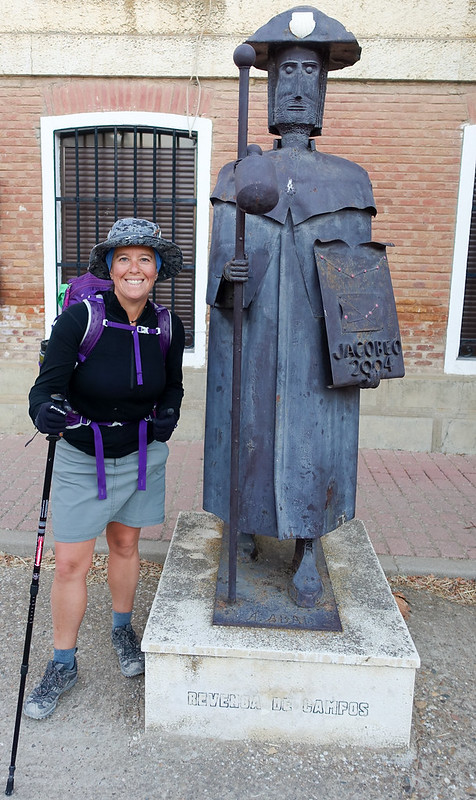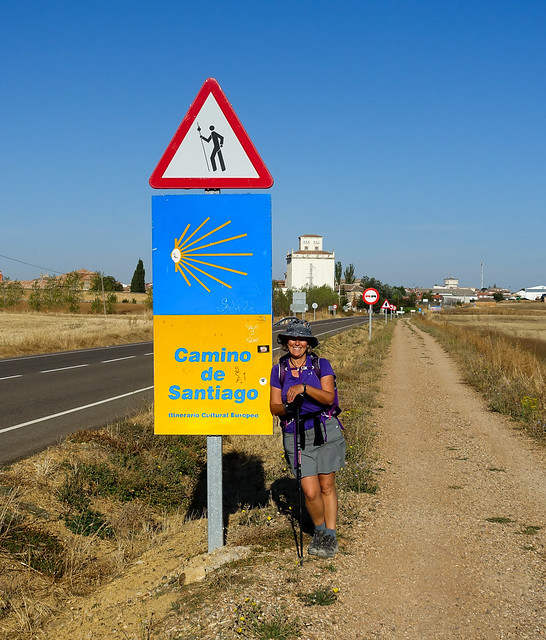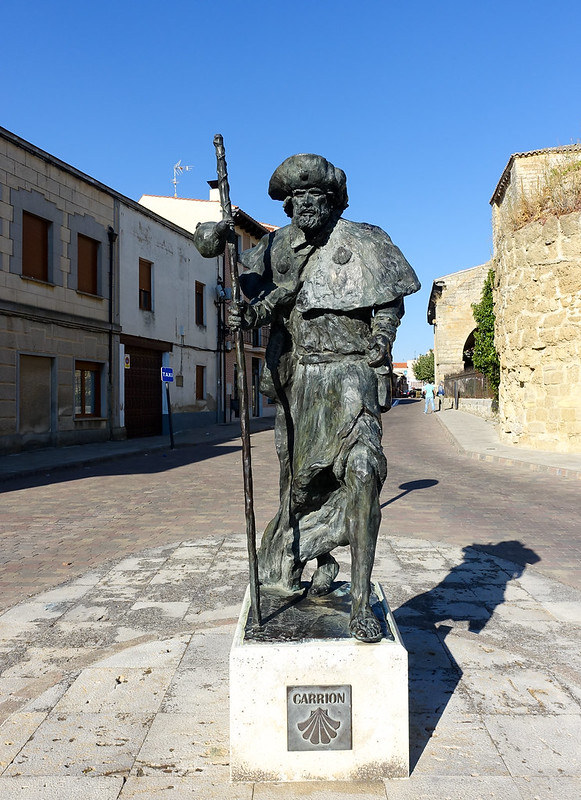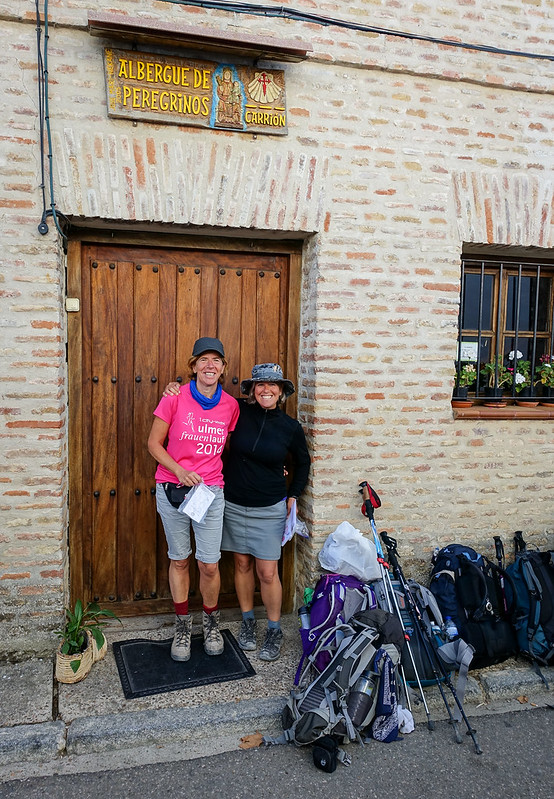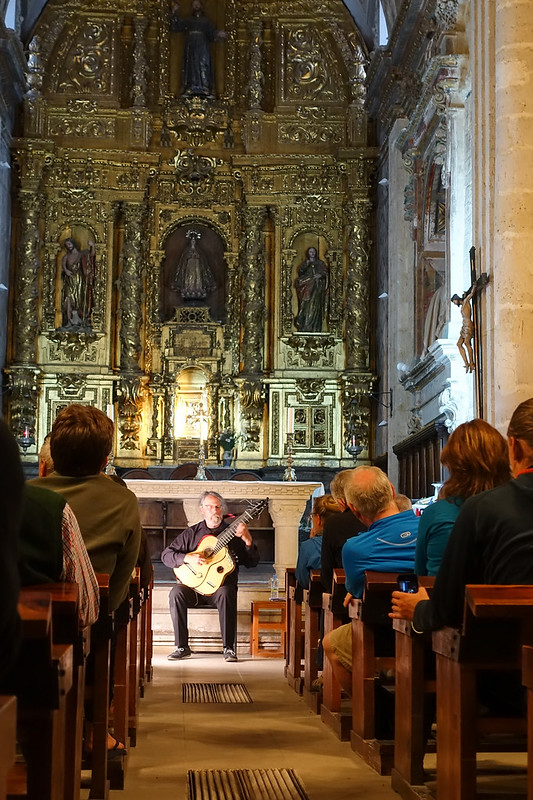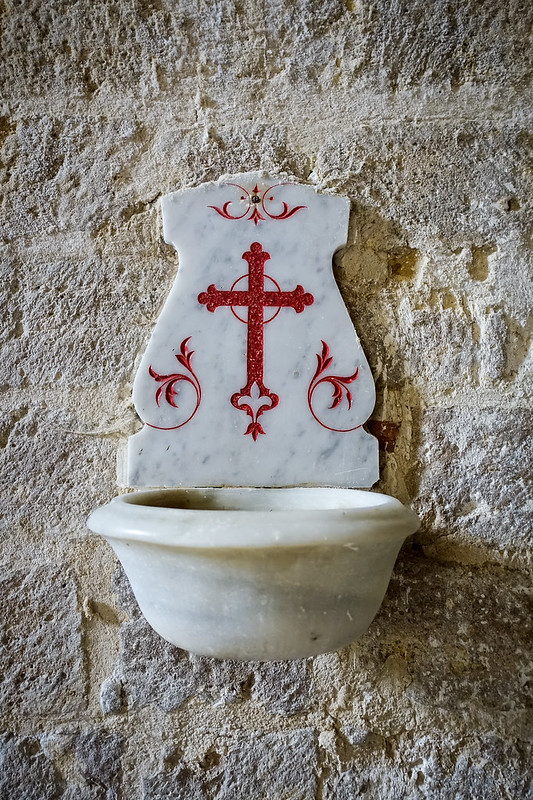HI ALL: We have had the IT sort out our comment section. They finally have it functioning again. So you can contact us or comment and we will actually get it!
We are sadly leaving beautiful Burgos today, but we are well rested from our quiet hotel room. The Camino itself runs on the back side of the cathedral and so we walked back across the bridge and up there to start another spectacular day. The prescribed route from Burgos is 30.5 km to Hontas, but that is for crazy people and we will only go 20.2 km to Hornillos del Camino.
Today is also our first day on the Meseta (Spanish for plateau), where there is very little shade and it can be very hot especially in the afternoon. Many pilgrims with less time decide to (horror) miss this part of the Camino (ie take the bus to Leon). However it is very peaceful with wide open spaces. There are bright stars in night and the sunrises are incredible.
Funny now was all the signs we saw in Burgos that said “why walk the Meseta, when you can bike?” Now we know why. This is FLAT and about 200 km long. We did see a fair number of people with back packs strapped to the bikes, but this is not all roses either. If you think your feet hurt after walking 25 km a day think how your butt will feel if you are not a trained biker and it is unlikely you have padded bike shorts on for your 100 km day!
It is 8 days walking until the next major city Leon so now is the time to stock up on any necessities besised the laughing cow, cans of sardines, and cookies you can get almost anywhere.
Unlike the long slog into Burgos the walk out is beautiful. There are two steep climbs and descents part way through the day right after each other from Rabe de las Calzadas. Most of the walking today is gravel and earth farm tracks.
Hornillos has one main street, Calle Real, and only 66 inhabitants which makes it quite typical of many small villages on the Meseta. We arrived here very early and found a new Albergue with luxuries like each bed had it’s own plug and a reading light! They also made a huge paella for the communal meal and we joined in. There is only one shop at the entrance to the village and so we parked outside to watch the action go by. Teresa from Gig Harbour was appointed mayor and Daniel deputy while they sat outside and gave a comical running commentary on the days events. The Albergue also had a pleasant garden, which became our go to for selecting accommodation. We are really getting to depend on our Camino family.
We unfortunately got stuck with the dreaded Spanish snorer, an American with his iPad blaring white light all night long and thus we had very little sleep. This made for a rough very early morning. We did have some food to eat and luckily a bar was open before sunrise and just at the exit to the town to get a pretty good coffee. We are thankful we only have 16 km planned for today to Castrojarez.
We set out again with about 20 minutes until sunrise. The next sign of habitation is in 5 km, where there is one small albergue at San Bol visible well off the track. Apparently this place, which is in the middle of nowhere did not have running water until 2010. It is another 5.3 km to Hontas, which is the usual destination for yesterday. From here “The Book” (that we don’t own) says you should go 34.9 km to Fromistra! HA!. We have 5.3 km down and will go another 10.7 km to Castrojarez.
San Anton is the 14th century Monastery and Hospital of San Anton are now mostly ruins. The hostel here is basic and very friendly, the sleeping area is an alcove protected from the outside with large tarpaulin curtains. The route passes under a Gothic double arch where there is still an alcove where bread was once left for passing pilgrims after the Monastery had closed for the night.
Castrojeriz is a reasonable size town, population around 900 inhabitants, with all services and several albergues. The town is about two kilometers long and narrow and you can see it up on the hill side ahead for quite a long while. We followed the arrows up the main road and past several private places to stay.
We came upon the Municipal here and walked up the stairs to see what was up. Daniel was not at all keen, but we were so warmly greeted by the older gentleman who was the caretaker that I asked him to give it a chance. The man gave us glasses of cold juice and slices of fresh baked bread. The albergue was just one large room, but the beds were widely spaced and the place was every clean and organized. He gave each person who checked in a personal tour and explained where everything was. He supplied coffee tea, bread, and some other basics like rice and pasta for donation only. The other great thing here was they have a centrifuge for drying the clothes. The kitchen was small, but we all took turns. We were joined by Rita the snorer, but she was very quiet tonight. We were also joined by German Christine, with who we made good friends.
‘Castrojeriz has been fortified since Celtic times, more than two thousand years ago. The hill was subsequently occupied by Romans, Visigoths, Moors, and eventually became part of Castile in 1131 after Alfonso VII won the town from the Aragonese. For four hundred years Castrojeriz prospered as a fortified town on the pilgrimage to Santiago; during that time it attracted many merchants making it a hub of commerce. However the decline started when the town sided with the losers in the 1521 War.”
Todays route is to complete the end of the “traditional stage” from yesterday. This puts our destination of Boadilla Del Camino at 18.9 or to Fromista at 24.2 km.
We started the day by walking up the steep hill side to see the sun rise.
And then we walked on the flat and very straight Meseta!
San Nicolas is at 8.5 km where we finally found an open bar for breakfast, but on the way there is Hospital de San Nicolas the first place to get some water. It is an albergue run by the Italian Confraternity, they offer incredible hospitality. There are only 8 beds; however they will lay out mats for some others to sleep on the floor. This the place famous for the ritual of washing of the feet before the evening meal. They also offer a very nice Camino stamp.
Like us a number of people had a plan to stop at Boadilla del Camino after another 10.4 km, but this is a really crappy dusty town. The bar was also gouging for food. They charged 2 E for a banana! This is farm country and there is lots of dust from the plowing going on. We kept going the the 5.3 km to Fromista.
Canals are one of the main feature of the landscape today. The construction of the canals was started in the 1750’s and took nearly fifty years to finish. The canals no longer carry goods but continue to irrigate the surrounding countryside. The route into Fromista is over one of the canal locks.
Here again you have to walk all the way to the other end of town to get to the municipal. This was not too bad a place, but there was no kitchen. There was a good grocery store though and we managed with sandwiches and relaxing in the garden. Again we are blended with amazing warm sunny weather. We met up again with Rebeca from the UK.
Today we are going to Carrion de las Condes today, which is 21 km. We set off early as we wanted two of the 58 beds in the Albergue Parroquial de Santa Maria. This is the Albergue of the famous singing nuns!!
The first 3.5km of today is along the side of the road, P-980 to Poblacion de Campos. It is a flat and easy underfoot on paths built for pilgrims, this path continues all the way to Carrion de Los Condes.
As you leave the Poblacion de Campos just before the bridge over the Rio Ucieza there is a choice of routes. The main route follows the road on a man made path with very little shade, the other follows along the river and has some shade from the trees that grow along the side of the river. The Roi Ucieza path is quieter, however there is only one village with no guarantee of water or food being available. Because of this we did not take the river route, but the more direct road route.
Walking into Carrion we felt like carrion as we were mobbed by hordes of small flies for about a km.
Arriving to the city we followed the signs to Santa Maria, which is just off a nice small square infront of the church of the same name. Here for the first time we found ourselves first in line when they opened an hour later at 1.
While we waited we checked out the bakery near by where they had these flaky pastry, cream, and honey triangles that were unbelievably delicious. In fact Dan went back for another as soon as he has scarfed the first. We were quickly joined by Christine from Germany.
We were checked in my the nuns and the hospitalities who had just arrived that day from Peru. We were assigned to one of the smaller rooms and luckily with a quiet bunch of roommates.
What makes this place special is the social program. There are Vespers in the church at 1730 where the nuns sing hymns, at 1800 they have a sing along in the lobby of the Albergue where they sing and play instruments to religious and secular songs in several languages. They do give you song sheets, but it is pretty had to sing along to a song you don’t know in a language you don’t know. It was still great fun.
Beside Spanish of course the kids form Peru spoke English, French, and German perfectly. The senior nun was also German, but spoke the same languages. She had an amazing an special aura about her. They then invited people to sing a song from their country and so we had English from Canada, Portuguese from Brazil, Italian, French, and German. The show stopper was however Grace from Washington DC, who had the whole crowd in tears with her rendition of Leonard Cohen’s Hallelujah. In fact the senior sister said “Great now no-one else will want to sing”.
After this there was a special treat for the pilgrims with a classical guitar and harp musical presentation in the church. This was followed by mass if you are interested and then a special blessing to each pilgrim up at the altar. This was all done by 9 when we enjoyed a communal meal prepared by everyone together. What a great experience.

